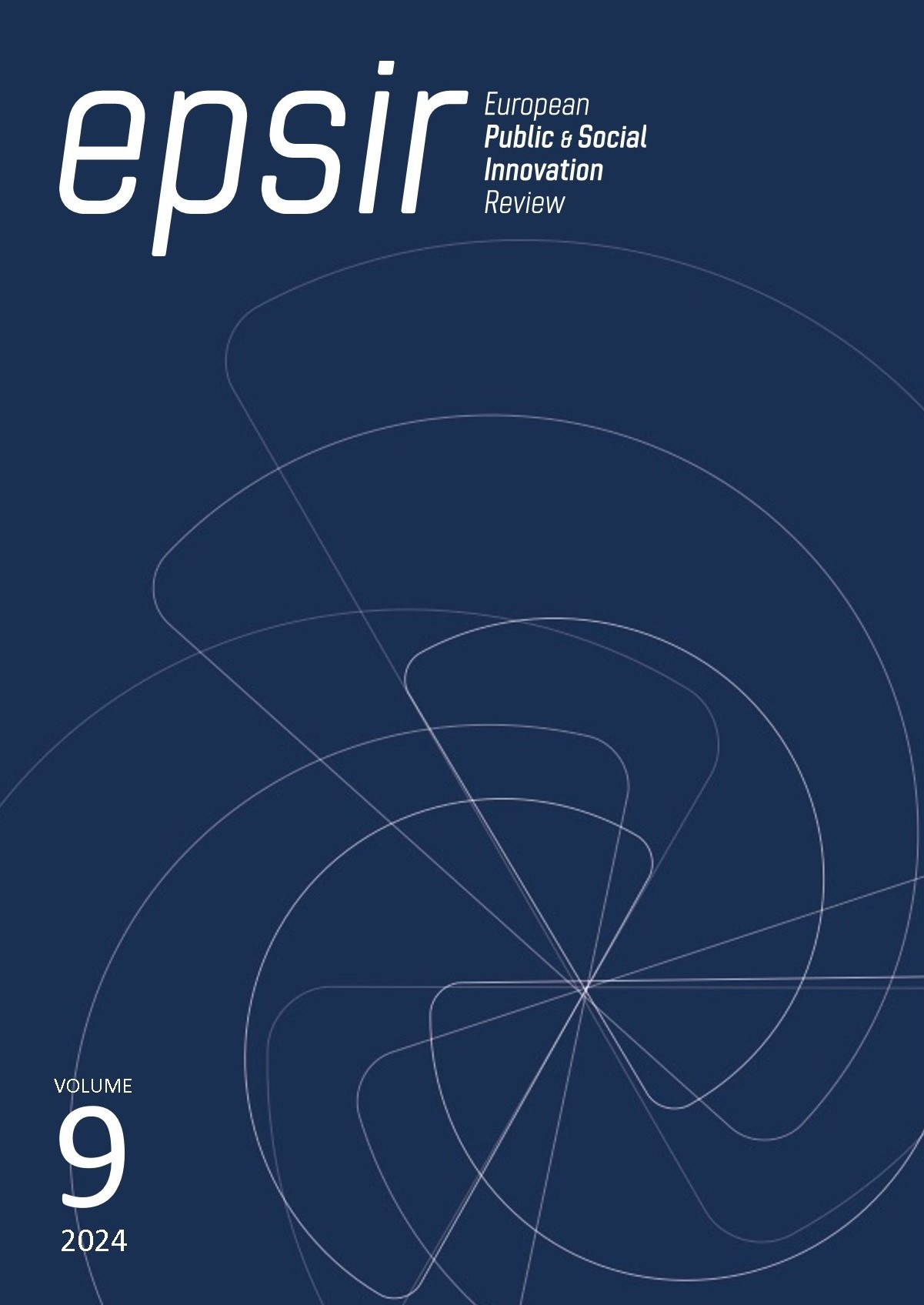Modelo predictivo de enfermedades cardiovasculares basado en Redes Bayesianas
DOI:
https://doi.org/10.31637/epsir-2024-1804Palavras-chave:
redes bayesianas, enfermedades cardiovasculares, prevención, modelos predictivos, BSEJ, KDB, naive bayes, aprendizaje automáticoResumo
Introducción: Este estudio presenta un análisis y comparación de varios modelos de redes bayesianas para la predicción de enfermedades cardiovasculares, utilizando datos clínicos para identificar los modelos más efectivos. Metodología: Los algoritmos evaluados incluyen Naive Bayes, TAN_cl, TAN_hcsp, FSSJ, BSEJ y KDB, los cuales fueron entrenados y validados para medir su desempeño. Para evaluar el rendimiento se utilizó un conjunto de datos clínicos de pacientes, combinando cinco bases de datos públicas. Las métricas usadas fueron como precisión, sensibilidad, especificidad, F1 Score y además una validación cruzada para asegurar la consistencia de los resultados. Resultados: El modelo BSEJ presentó el mejor rendimiento en todas las métricas evaluadas, destacándose por su capacidad de eliminar dependencias irrelevantes, manteniendo así un equilibrio óptimo entre complejidad y precisión. Discusión: Las redes bayesianas ofrecen una potente herramienta para la predicción de ECV, ya que no solo proporcionan predicciones precisas, sino que también facilitan la interpretación de las relaciones entre los factores de riesgo, lo cual es crucial en el ámbito clínico. Conclusiones: Las redes bayesianas, y en particular los modelos BSEJ y KDB, se destacan por su efectividad en la predicción de enfermedades cardiovasculares, proporcionando soporte a la toma de decisiones clínicas de manera informada.
Downloads
Referências
Bravo, F. P., Del Barrio García, A. A., Gago Veiga, A. B., Gallego de la Sacristana, M. M., Pinero, M. R., Peral, A. G., Dzeroski, S. y Ayala, J. L. (2019). SMURF: Systematic Methodology for Unveiling Relevant Factors in Retrospective Data on Chronic Disease Treatments. IEEE Access, 7, 92598–92614. https://doi.org/10.1109/ACCESS.2019.2927429 DOI: https://doi.org/10.1109/ACCESS.2019.2927429
Bravo, F. P., García, A. A. D. B., Russo, L. M. S. y Ayala, J. L. (2020). SOFIA: Selection of Medical Features by Induced Alterations in Numeric Labels. Electronics, 9(9), 1492. https://doi.org/10.3390/electronics9091492 DOI: https://doi.org/10.3390/electronics9091492
Cardiovascular diseases (CVDs). (n.d.). Cardiovascular diseases. https://lc.cx/nFw6WA
Chicco, D. y Jurman, G. (2020). The advantages of the Matthews correlation coefficient (MCC) over F1 score and accuracy in binary classification evaluation. BMC Genomics, 21(1), 6. https://doi.org/10.1186/s12864-019-6413-7 DOI: https://doi.org/10.1186/s12864-019-6413-7
Ecuador acumula pacientes con enfermedades cardiovasculares | CEAP :: Centro de Estudios Asia-Pacífico (n.d.). https://lc.cx/x5lAR1
Enfermedades cardiovasculares - OPS/OMS | Organización Panamericana de la Salud. (n.d.). https://www.paho.org/es/temas/enfermedades-cardiovasculares
Heart Failure Prediction Dataset (n.d.). https://lc.cx/D2AHi-
Jahirul, M. (2010). Investigating the Performance of Naive- Bayes Classifiers and K- Nearest Neighbor Classifiers. International Conference on Convergence Information Technology (ICCIT 2007), 1541-1546. https://doi.org/10.1109/ICCIT.2007.148 DOI: https://doi.org/10.1109/ICCIT.2007.148
Kumar, S. y Sahoo, G. (2015). Classification of Heart Disease Using Naïve Bayes and Genetic Algorithm (pp. 269-282). https://doi.org/10.1007/978-81-322-2208-8_25 DOI: https://doi.org/10.1007/978-81-322-2208-8_25
La Carga de Enfermedades Cardiovasculares - OPS/OMS | Organización Panamericana de la Salud. (n.d.). https://www.paho.org/es/enlace/carga-enfermedades-cardiovasculares
Madden, M. G. (2009). On the classification performance of TAN and general Bayesian networks. Knowledge-Based Systems, 22(7), 489-495. https://doi.org/10.1016/j.knosys.2008.10.006 DOI: https://doi.org/10.1016/j.knosys.2008.10.006
Moscatelli, M., Manconi, A., Pessina, M., Fellegara, G., Rampoldi, S., Milanesi, L., Casasco, A. y Gnocchi, M. (2018). An infrastructure for precision medicine through analysis of big data. BMC Bioinformatics, 19(S10), 351. https://doi.org/10.1186/s12859-018-2300-5 DOI: https://doi.org/10.1186/s12859-018-2300-5
Nagavelli, U., Samanta, D. y Thomas, B. (2023). ML-Based Prediction Model for Cardiovascular Disease (pp. 91-98). https://doi.org/10.1007/978-981-19-4052-1_11 DOI: https://doi.org/10.1007/978-981-19-4052-1_11
Tovey, C. A. (1985). Hill Climbing with Multiple Local Optima. SIAM Journal on Algebraic Discrete Methods, 6(3), 384-393. https://doi.org/10.1137/0606040 DOI: https://doi.org/10.1137/0606040
Wang, X., Wang, F., Hu, J. y Sorrentino, R. (2014). Exploring joint disease risk prediction, 1180-1187.
Zhong, C., Pedrycz, W., Wang, D., Li, L. y Li, Z. (2016). Granular data imputation: A framework of Granular Computing. Applied Soft Computing, 46, 307-316. https://doi.org/10.1016/j.asoc.2016.05.006 DOI: https://doi.org/10.1016/j.asoc.2016.05.006
Downloads
Publicado
Como Citar
Edição
Secção
Licença
Direitos de Autor (c) 2024 Dayron Rumbaut Rangel, Milton Rafael Maridueña Arroyave

Este trabalho encontra-se publicado com a Licença Internacional Creative Commons Atribuição-NãoComercial-SemDerivações 4.0.
Authors who publish with this journal agree to the following terms:- Authors retain copyright and grant the journal right of first publication with the work simultaneously licensed under Creative Commons Non Commercial, No Derivatives Attribution 4.0. International (CC BY-NC-ND 4.0.), that allows others to share the work with an acknowledgement of the work's authorship and initial publication in this journal.
- Authors are able to enter into separate, additional contractual arrangements for the non-exclusive distribution of the journal's published version of the work (e.g., post it to an institutional repository or publish it in a book), with an acknowledgement of its initial publication in this journal.
- Authors are permitted and encouraged to post their work online (e.g., in institutional repositories or on their website) prior to and during the submission process, as it can lead to productive exchanges, as well as earlier and greater citation of published work (See The Effect of Open Access).




